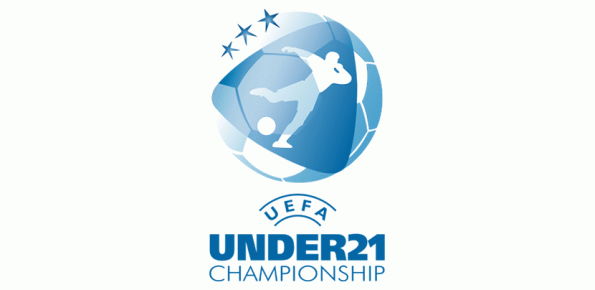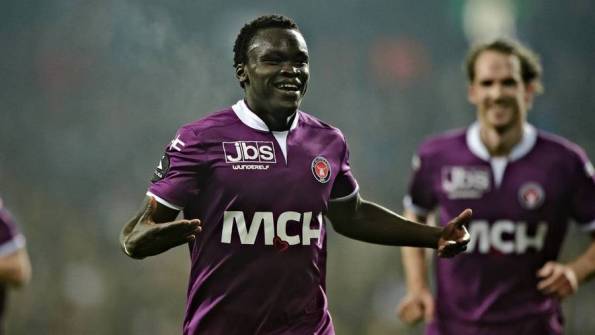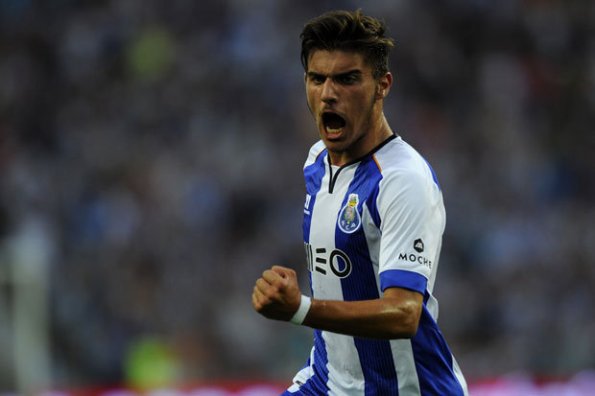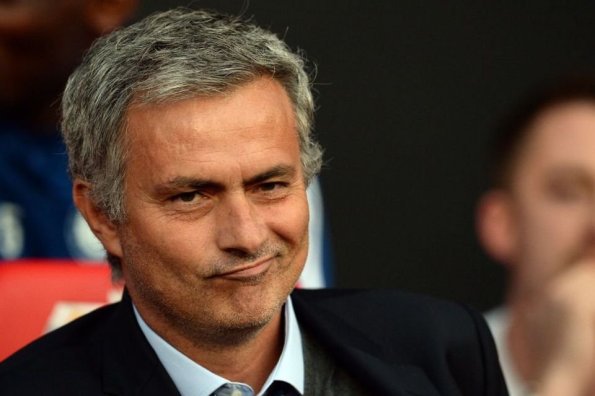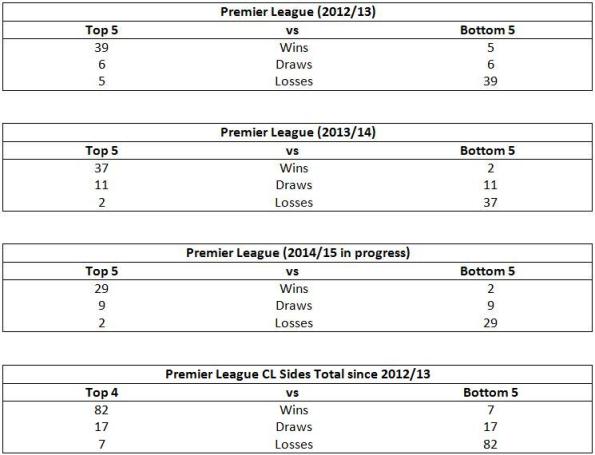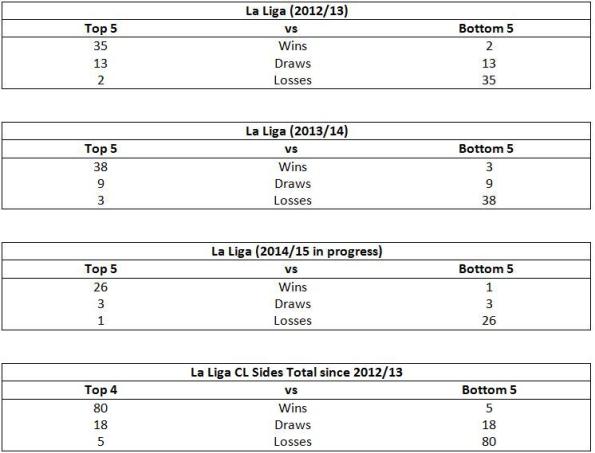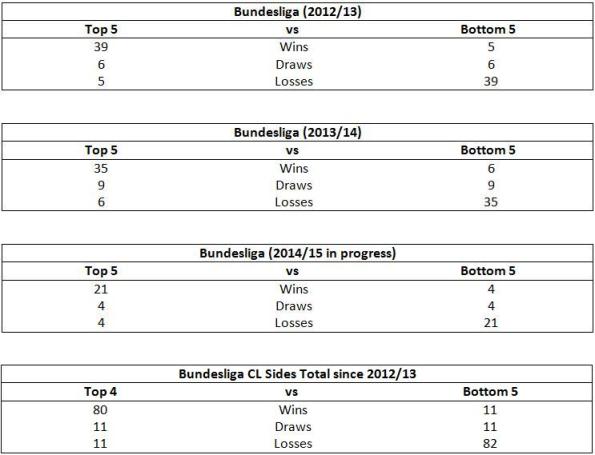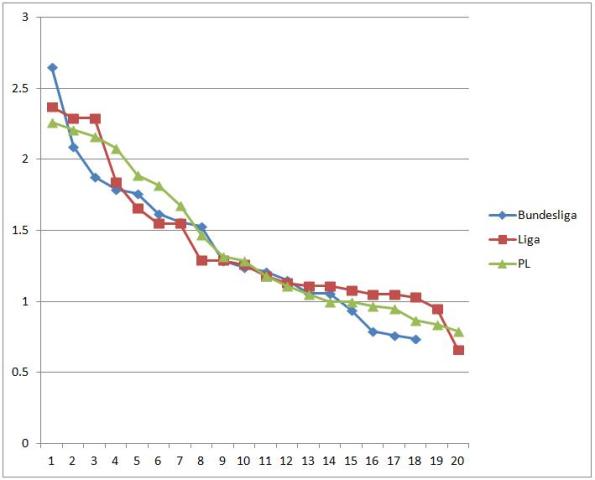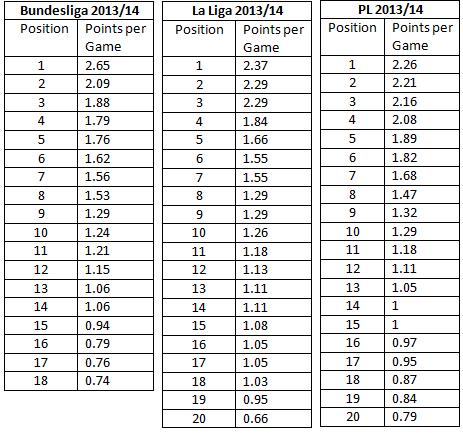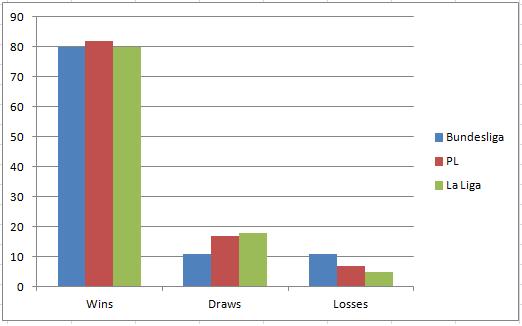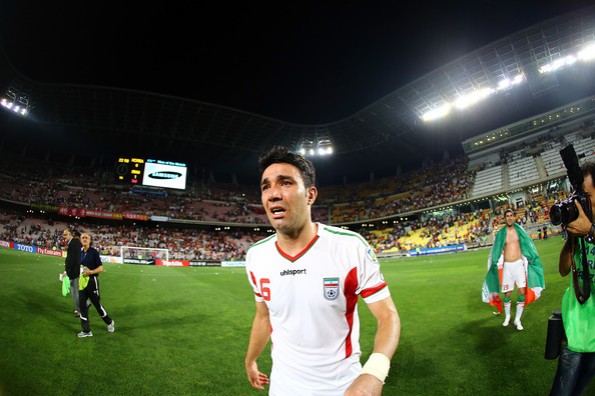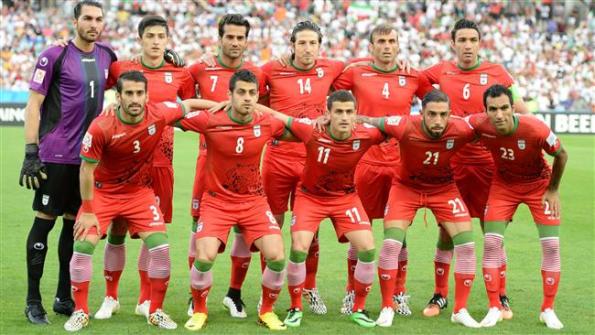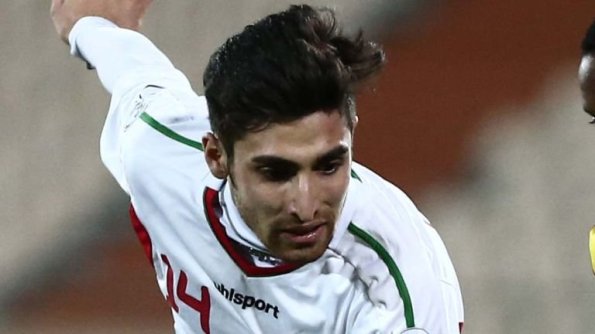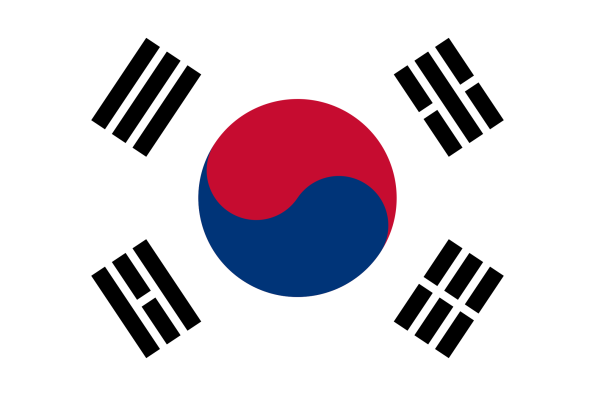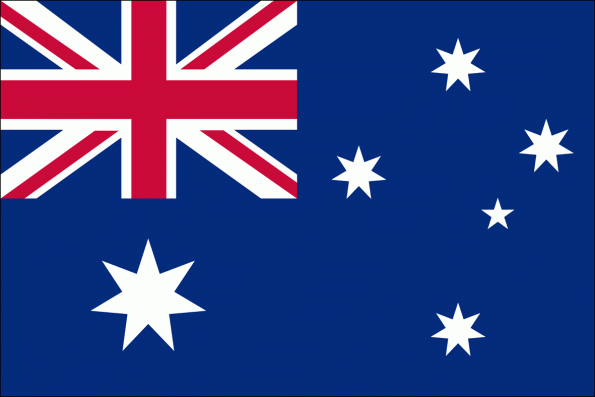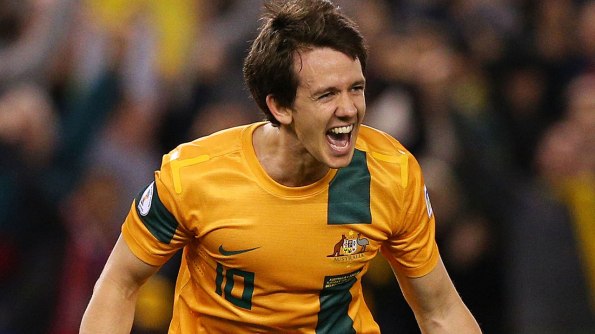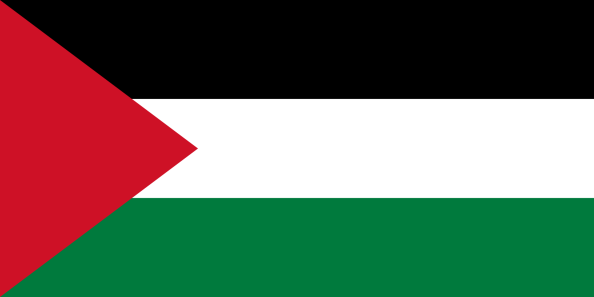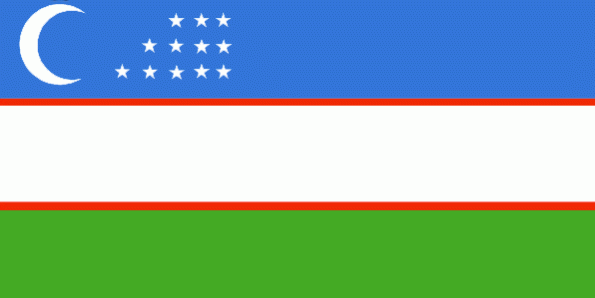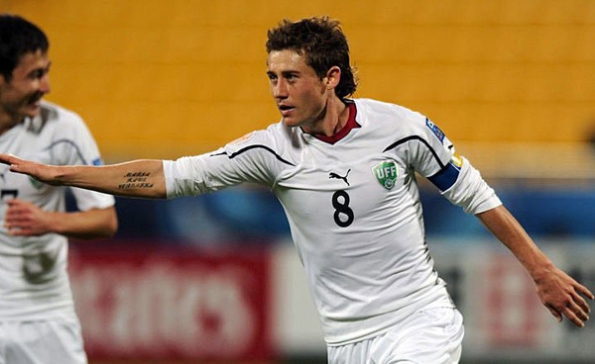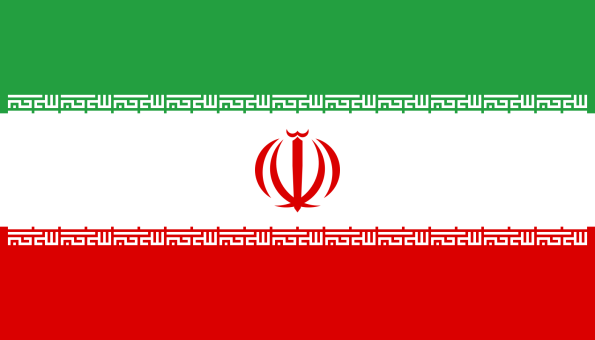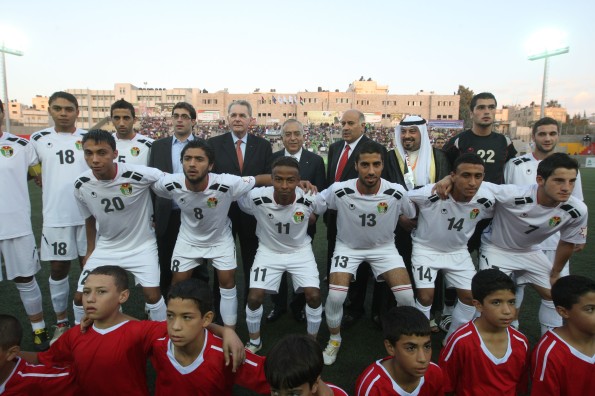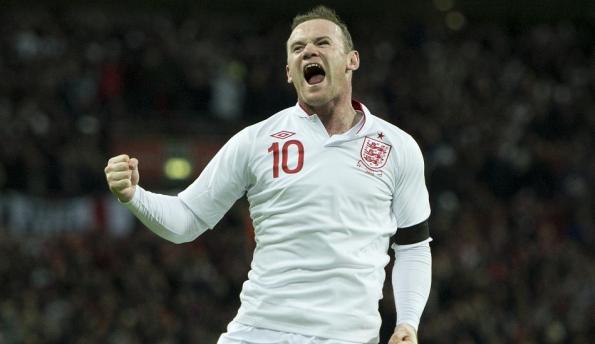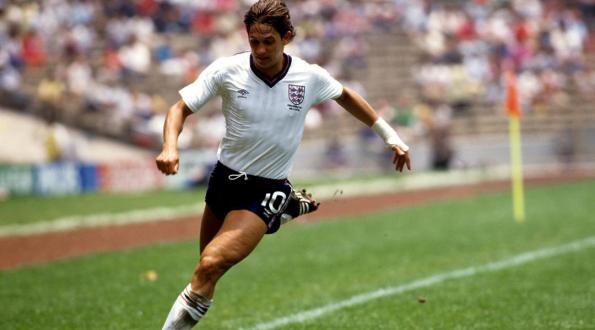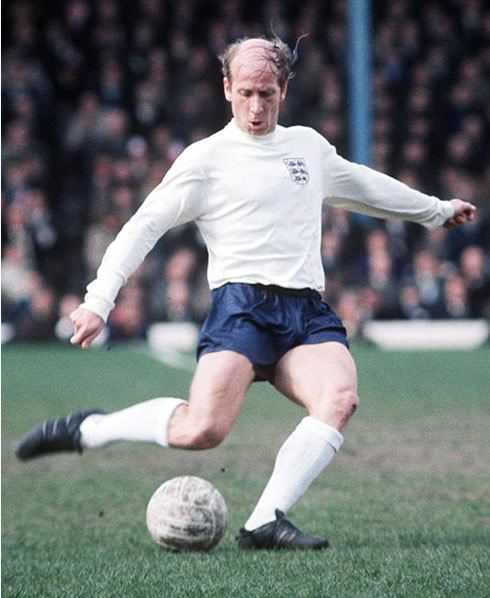Under 21 UEFA Euro 2015 : 5 Rough Diamonds to Keep an Eye On
The Under-21 European Championships is about to kick off in the Czech Republic. 8 teams will battle it out for the crown. Some familiar names will also be participating and they include established players such as Marc-André ter Stegen, who recently lifted the treble with Barcelona, Harry Kane, John Stones, Bayern Munich’s Pierre Højbjerg, and Portugal’s Bernardo Silva.
Historically, future world class players first made their mark on the European game at this tournament. Luis Figo, Andrea Pirlo, Mesut Ozil and Fabio Cannavaro are among some of the graduates.
Here are our picks for 5 players to keep an eye out for:
Pavel Kadeřábek (Czech Republic)
The hosts will go into the tournament as outsiders to qualify from Group A where they face Germany and dark-horses Denmark, as well as Serbia. If they are to cause an upset then a lot will depend on right-back Pavel Kadeřábek. Already an established full-international, the 23 year old is considered the country’s best full back since the days of Marek Jankulovski and Zdenek Grygera.
He is expected to move this summer, with Hoffenheim touted as a likely destination. The Sparta Prague star man is also adept lining up further ahead on the pitch if required.
Pione Sisto (Denmark)
Pione Sisto Ifolo Emirmija is a name that encompasses everything about modern football. He was born in Uganda to Southern Sudanese parents who immigrated to Denmark with the toddler.
Now 20, he only recently received his Danish citizenship, almost 20 years after moving to the country. The process was “fast-tracked” by the senior national team manager, Morten Olsen.
The dimunitive 5’7 wide attacking midfielder has just played a key role in leading FC Midtjylland to the Danish Superliga title and has interested scouts from a number of major European clubs. He is equally adept on both wings but is predominantly right-footed.
He is pacy, boasts a lot of flair and creativity as well as impressive accuracy when bearing down on goal.
Max Meyer (Germany)
Germany will start the tournament as arguably one of the two favourites to lift the trophy. They are helped by the fact that 6 of their players have already been exposed to a senior debut under Joachim Loew.
One of those players is Schalke’s Max Meyer. His close and pacy dribbling style has been likened to Lionel Messi’s. Meyer puts that down to his schooling in Futsal. Currently an established player in Schalke’s starting line-up he has already played almost 70 matches over the past two seasons, scoring 13 times in the process.
The two-footed attacking midfielder can play anywhere down the middle of the pitch, switching between central midfield and a more advanced role a little further up where he is more of a direct goal threat. Now 19, his reputation has risen so much that he’s already on the radar of a number of “bigger” clubs and it is likely that a transfer will take place sooner rather than later.
Daniele Rugani (Italy)
Daniele Rugani is a name quite familiar to Italian football fans. The strong center-back led Empoli to promotion in 2013/14 and cemented his reputation by helping keep the club up in Serie A this season.
He is strong in the air and is impressively focused during matches, showing the maturity of players much older. He does not dive into tackles and prefers to read the game elegantly in the mould of legendary defender Alessandro Nesta.
It was never likely that he would remain with Empoli for too long, especially as Juventus co-owned him. The Champions League finalists wasted no time in buying out the remaining 50% of his contract from Empoli and have already stated that he would start next season in Turin.
Ruben Neves (Portugal)
Porto’s Ruben Neves has been consistently fast-tracked at all levels of Portuguese football. Already on Fernando Santos’ radar, he is now an established member of Rui Jorge’s U-21 side despite being only 18.
He has been compared to Joao Moutinho already and is likely to be his heir in the national side eventually. He’s already a regular in Porto’s line-up during his debut season, starting 11 matches and making over a dozen appearances off the bench. He has also appeared in the Champions League.
Neves likes to get hold of the ball, and dictate play from a deeper position but is not shy to maraud forward and get into dangerous positions either. Although his goal-scoring output is something that will surely improve as he gets older.
Premier League Miscalculates Value of Europa League
La Liga will have 5 teams participating in the Champions League next season thanks to Sevilla’s success in the Europa League. Premier League clubs, though, continue to, publicly at least, shun their involvement in Europe’s second major club competition. Managers at clubs, as big as Spurs and Liverpool, constantly bemoan their potential participation on Thursday nights. As a result, by this time next year, Serie A could, potentially, regain its 4th Champions League spot, at the expense of the PL, largely due to poor performances by the latter’s clubs in the Europa League. This is facilitated by England losing its highest co-efficient points (2010/11) from the calculation period next season. The question is why is there such a disdain by PL clubs in taking the competition seriously?
Spurs, Liverpool, and Everton are sides who have experienced Champions League action due to their league position on an inconsistent basis over the past decade. The gap between the “Big Four”, which includes Chelsea, Manchester City, Arsenal, Manchester United and other clubs is arguably greater than ever (with the caveat of Manchester United’s out of character last couple of seasons). Three spots are probably etched in stone whilst a 4th CL may be open to a challenge, at some point during the season, before the CL regular pulls away. It is a vicious cycle as the financial benefits gained from the CL allow the respective sides to build and develop a playing squad that is able to “compete” on two fronts – without necessarily challenging for a trophy on either. Clubs who miss regular participation in Europe’s elite competition arguably do not have the squad depth to similarly compete in a balanced way.
Considering that the league is a 38-game slug-fest, it’s difficult to understand why some clubs prefer to prioritize the league route (not even a title challenge) to the CL over a Europa League one especially with the knowledge that victory there would guarantee a CL spot. Winning the Europa League would include a, approximately, 17-match journey for PL clubs, less than half the games of the league season. In reality, a side could gain the CL spot by winning as little as 6 or 7 matches during the campaign. Surely by mid-February, the start of the knock-out rounds, clubs would be in a good position to strategize the rest of their season’s assault rationally. History suggests that they are far likelier to reap the rewards by prioritizing winning the Europa League over a futile 4th spot race, unless they are already comfortably ahead in that race. In the age of projections and statistic models, it would not take much for clubs to have a clear indication of where they should put their focus on and it’s hard to conclude that it would be pointing towards the league.
Instead, PL clubs such as Spurs, this season, find their seasons fizzling out towards the end of March when it’s clear that the CL assault through the league is over, following their exit from the Europa League, had they been in it in the first place. For others, such as Everton, their assault is usually over far earlier in the season.
Next season, Liverpool and West Ham should be joining Spurs and possibly Southampton in the Europa League. For at least 2 if not 3 of those sides the mathematical likelihood of finishing 4th is slim to none. It would be good to hear a more re-conciliatory approach by their managers when it comes to targeting the Europa League. There is no logical reason for there not to be one as long as they have secured their club’s position in the league, away from relegation. There is no reason why these clubs cannot target a more realistic Europa League-placing through the league whilst challenging for a CL spot through the European competition itself. If they don’t, sooner than later, there is a real risk that the PL will surrender the coveted fourth position to Serie A, as quickly as in 12 months time.
Pragmatic Iran Fall Short But Queiroz Outlines Brighter Future
If preparing for a major tournament meant finding ways to undermine your chances of success then the Iran Football Federation (IFF) has mastered the art of preparation. Team Melli had played two international friendlies since the World Cup. During that time, three months were wasted due to protracted discussions between the IFF, the country’s Ministry of Sports and Carlos Queiroz over a contract extension for the Portuguese head coach. Eventually ink was put to the paper by all concerned. Nevertheless, Queiroz managed to mastermind 3 narrow victories in Group C, and a place in the last 8, where Iran fell short to Iraq in a controversy filled penalty shoot-out defeat. Iranians misery was prolonged by an appeal against the presence of an Iraqi player who had failed a doping test only months earlier. As predicted, the result of the match was not over-turned.
Iran’s major preparation for the Asian Cup had come in the shape of South Korea, at the Azadi Stadium in November, after the visitors agreed not to charge the hosts a fee and, in a subsequent pre-tournament friendly against Iraq where Queiroz put out, what was thought to be, a reserve side. Team Melli bettered the Koreans thanks to substitute Sardar Azmoun’s first international goal. The match was largely dominated by the Koreans just as most of the recent match-ups between the two sides. But Team Melli’s counter-attacking game seems to be the Koreans Achilles heel as they took another Korean scalp. The pattern of that game is mirrored anytime Iran takes on any opponent of decent quality.
Similarly, in the second friendly game, Azmoun scored the winner after he broke free from the last defender and coolly slotted the ball into the goal with the outside of his right boot. More importantly, Queiroz gave first starts to Morteza Pouraliganji, a defensive midfielder playing center back for the first time, and Vouria Ghafouri, a right-sided player from Sepahan. Both would go on to start at the Asian Cup. They would be joined by the impressive Azmoun from the second group game onwards.
Queiroz’s Functional and Robust Team Melli
Carlos Queiroz has created a mentally robust, highly structured and functional counter-attacking side, starting largely in a 4-1-4-1/4-2-3-1 formation. His approach is somewhat criticized by certain domestic observers, who include Iranian club managers or ex-managers such as Amir Ghalenoei and Hamid Derakhshan, managers of Tehran’s “Big Two” Esteghlal and Persepolis, who advocate for an Iranian in charge. His side had not conceded a goal, at the Asian Cup, until being reduced to 10 men against Iraq. Queiroz has largely stayed loyal to the older generation of players, who have formed the backbone of the national side for the better part of the last decade. Initially he did not feel younger replacements had the quality to come into play, without hurting the team’s chances in the short-term. However, the Portuguese, always pragmatic, having witnessed dips in the physical conditions of a few of his older regulars, was not afraid to make tough decisions when he felt them in the interest of the side. This was illustrated by the 11th hour decision to install a new goalkeeper, Alireza Haghighi, with almost no international experience, at the World Cup. Similar decisions have now taken place with Pouraliganji,
Ghafouri and Azmoun, who scored a wonderful Bergkamp-esque winner against Qatar. Others such as Vahid Amiri and Soroosh Rafeie also figured at the Asian Cup.
If one took a step back and objectively assessed the work the Portuguese has done, it would be hard to fault him. From arranging friendly matches thanks to his contacts in different countries (he recently convinced a few South African club sides to put out sides against Team Melli during its training camp in the country), to choosing the team’s base, arranging flights as well as handling his own role and responsibilities, which included qualifying for the World Cup and putting on relatively acceptable performances, Quieroz has had his work cut out in Iran. Ultimately, his legacy will depend a lot upon whether he will be the man given the task of continuing to rebuild the side. He has already given a sneak peek of how he sees the future panning out with the introduction of a younger generation of players during the Asian Cup. At the same time, no other manager in the history of Team Melli has received the sort of support and faith that the squad has given the Portuguese.
One Eye on Today, Other on Future
Queiroz had an aging group of players at the World Cup, and took most of the key members of that squad again to the Asian Cup. During the Korea friendly match, Iran started with 6 players over the age of 30, as well as two others who would be over-30 by the time the next World Cup comes along in 2018. A major rebuilding job is long overdue. In comparison, South Korea has named only 2 players over the age of 30 in its Asian Cup Squad, whilst Japan only 4, including a goalkeeper. To be fair, Queiroz introduced a number of younger squad players for the Asian Cup, a decision which was seen as unlikely only one month
earlier.
On one hand, it is understandable that Queiroz has deferred the rebuilding process, to a degree, preferring to focus on immediate results, as Iranian football lacks a long-term blue-print to follow, whilst the manager knows that his future in the job depends on results gained due to the nature of the press scrutiny and domestic “expert” critics. On the other hand, Team Melli desperately needs the injection of new blood if it’s to progress. The backbone of the side is well past its best and the team lacks genuine pace and incisive creativity. The introduction of Alireza Jahanbakhsh, who appeared briefly, and Sardar Azmoun, who starred at the tournament, would change that to a degree going forward. Team Melli is currently far better being the underdog against stronger opposition such as Japan or Korea. Against Bahrain, after an initial 25 minutes in which Bahrain dominated, Iran began to settle down and its superior set of players made the difference at the end. Both goals came from set pieces. Against Qatar, a tense and even first half was followed by a moment of magic by Azmoun before Iran settled for the lead and began dropping deeper, inviting Qatari pressure. Team Melli held out but the final 30 minutes was nail-biting. Iran was dominated virtually from start to finish against the UAE but its defence kept the Emiratis at bay without giving away any clear-cut opportunities. Eventually, a final 10 minute spell of pressure resulted in a winning goal, from another set piece, through dropped striker Reza Ghoochannehjad, who had come off the bench. Against Iraq, Team Melli was as adventurous as it has been in recent times. It dominated most of the first half and was good value for a 1 goal lead through Ghafouri’s pin-point cross and Azmoun’s bullet header. However, an inexplicable red card for left back Mehrdad Pouladi changed the whole complexion of the match. Iran surprisingly lost their shape for the first 15 minutes of the second half and allowed Iraq back into it. A back and forth marathon ended up 3-3 at the end of extra time and the lottery of penalty kicks went the way of the Iraqis.
What Happens Next?
A number of players will probably bid goodbye to the national team in the coming days. Captain Nekounam was in tears after the penalty shoot-out. At 34, he won’t take part in another Asian Cup and shouldn’t figure at the World Cup, were Iran to qualify. Teymourian, 31, may still have an outside chance to play at the next World Cup but his role must be reduced. Finding replacements for these two, who have formed the heart and soul of the side for almost a decade will be a huge task for Queiroz. However, their lack of mobility, relative to their younger days, has also meant that Team Melli played a slow-paced possession game for many years until Queiroz changed the style in the run-up to the final 3 World Cup Qualifiers in 2013. Masoud Shojaei, one of Queiroz’ favorite players, as well as Heydari should both walk away from the team now too. A major question mark remains over Jalal Hosseini’s immediate role with the side. At 32, he is not the oldest center back out there. He proved it by forming a great partnership with Pouraliganji, who may end of in defensive midfield in the position vacated by the captain. At the same time, the likes of Ashkan Dejagah, arguably Iran’s star player during the first two matches, Pouladi, Ghoochannehjad, the newly introduced and impressive Ghafouri will all be on the wrong
side of 30 when the World Cup starts.
On brighter notes, Amiri looked good as a left winger, Rafeie has the potential to replace Shojaei, whilst the likes of Azmoun and Jahanbakhsh have already shown their worth to the team. Azmoun, 20, is already showing signs that he is heir to legendary striker Ali Daei in a position that few Asian teams have quality within. He is surely destined for bigger things in European football too. The Dutch-based Jahanbakhsh, 21, has had exceptional form with NEC Nijmegen this season. He has scored 8 goals and assisted another 12 in only 20 starts in the Jupiler League. Both of the youngsters are likely to play an integral role as Team Melli continues the rebuilding process.Haghighi in goal has continued to prove to be a safe pair of hands although the highly-rated Alireza Beiranvand, another Naft player, who made his debut before the tournament started, will surely challenge him over the next couple of years. Injured defender Pejman Montazeri, only 31, may come back into contention too.
Going Forward with Queiroz
Across the board, a semi-final spot for Team Melli was seen as acceptable by most people back home. Iran fell short, again on penalty kicks, as well as in controversial circumstances, which probably aids Queiroz. The Portuguese took pre-emptive strikes against some of his critics including Ghalenoei and Derakhshan after the Iraq defeat. He also highlighted that to take Iran to the next level, one which includes attacking football, the IFF needs to play a more instrumental role. His assertion is not groundless. All of Iran’s opponents had played around 15 matches in the run-up to the tournament and the link-up between their players was evidence of better preparations. Objectively, Iran is yet to master its counter-attacking game and largely benefited from set pieces and second ball recoveries in the final third. On the flip side, its defensive side of the game makes it difficult to create many clear-cut opportunities against it. Needless to say, Team Melli has failed to become Asian champions since 1976. However, Iran has not lost in 90 minutes at the Asian Cup since 1996, when they lost to this year’s Quarter Finals opponents, Iraq, again.

There is no questioning Queiroz’ commitment or impact on team spirit & tactical discipline. More is expected going forward
If Queiroz is able to get better link-up play, involving more support players for the lone striker, during transition from defence to counter attack, then Team Melli may be able to add a crucial ingredient to its game. Either way, he is the right man to continue the work that he started almost 5 years ago. He has also shown that his pragmatism was a necessity and that he has the flexibility to make changes when it benefits the team. One of the Portuguese’s major achievements has been the team spirit and camaraderie that he has instilled, at a level which had never existed in Team Melli previously, at least not in the modern era. This achievement must not be underestimated in polarized Iran. The next few years will be an important period for Team Melli, culminating in the 2018 World Cup, as the last surviving members of a generation that included the likes of Mehdi Mahdavikia and Ali Karimi and others are phased out from the national team. Replacing them will be a tough task and the procedure must be handled with care. At the same time, expectations will surely include a more adventurous style of football. Queiroz has already shown that he’s the safest hands to navigate such circumstances.
A Star in the Making : Rubin Kazan’s Azmoun
Rubin Kazan’s Sardar Azmoun was 20 by the time the Asian Cup kicked off in Australia. His name may have been an unfamiliar one outside Russia and Iran. But the ethnic Turkmen made sure he would be well-known to Asian audiences, before the tournament was done, with a brilliant solo goal against Qatar. So quick has his sudden rise been that there had been widespread disappointment in his football-crazy homeland when he missed the cut for Team Melli’s World Cup squad for Brazil. Whilst Azmoun has been labelled the “Iranian Messi”, his style of play places him in a far more advanced orthodox target man role than the little Argentine.
Born on January 1, 1995, in the small town of Gonbad-e-Kavus in Iran, Azmoun inherited an athletic appetite from an early age. When he was 13 he had a choice to make, one that would define his professional career. Azmoun could have chosen volleyball, a sport he also excelled in, as his father was a former Iranian international. But he chose to make his own in-roads into football instead. Soon enough, after going through the ranks of provincial clubs in Golestan, Sepahan Esfahan, credited with having one of the best developmental academies in the country, came calling.
In early 2012, Azmoun, who had just turned 17, was called up Iran’s U-21 side for the 2012 Commenwealth of Independent States tournament in Russia. It was there that he caught the eye of Rubin scouts as he became top scorer with 7 goals in 6 starts. Within a year, and before having kicked a ball for Sepahan, he was back on a plane to Russia. He had agreed to join Rubin Kazan, rejecting offers from Persepolis and Esteghlal, and breaking the long-held trend of young Iranian footballers being enticed by Tehran’s two biggest clubs. Azmoun has highlighted the influence of legendary Rubin manager, Kurban Berdyev, in convincing him to move to Russia at such a young age.
Within 7 months he had become the youngest Iranian to ever play in European competition after making his Rubin debut in the Europa League in the summer of 2013. He also scored his first club goal in only his second club appearance in the same competition. On his league debut, against Anzhi, he came on as a substitute in the final 20 minutes and scored a goal and made another during a 5-1 rout. The future looked bright for the young Iranian forward.
By the end of his first full season in Russia, Azmoun had scored 5 goals from 9 starts and assisted a further 3 goals. He had become an established member of the first team. He would find himself strongly linked to Arsenal, Liverpool and Juventus. There were even suggestions, from his camp, that a deal with Arsenal was almost signed. But nothing panned out. However, at the end of the season, Azmoun received a double blow. Firstly he would no longer be working with his mentor Berdyev who departed the club and secondly he would miss out on Iran’s World Cup squad, having made his debut in the run-up to the tournament.
The 2014/15 season has been a mixed one for him. He’s largely figured as a substitute for Rubin, having not yet convinced his new manager Rinat Bilyaletdinov, and scored only once. However, he’s begun to play a more regular role under Carlos Queiroz. Azmoun is adept playing off the striker or cutting in from the wings but a growth spurt over the last 12 or so months has given him a taller frame which has pushed him into a more advanced central role for both club and country. He scored the winning goal against Korea in a friendly in November, then the winner against Iraq in a pre-tournament friendly. Having come off the bench against Bahrain during Iran’s first group game, he went on to start against Gulf Cup champions Qatar in the second match. He capped a good performance with a brilliantly taken, Dennis Bergkamp-like, goal. He went on to retain his spot for the final group game against UAE but was far too isolated and could not make an impact before coming off for eventual goalscorer Reza Goochannehjad, the man who had lost his place to the youngster.
Whilst it was not expected that Azmoun would start during the Asian Cup, as Ghoochannehjad had taken the only starting berth in attack, it was predicted that he may end up starting as the tournament progressed as he offers more unpredictability as well as a stronger physical presence. These predictions have come true. He’s also surprisingly good in the air despite not yet bulking up, and scored his maiden international goal via a header against South Korea, an opponent who Iran may face again in the semi-finals. Azmoun has got two good feet and Queiroz has turned to the Rubin forward for his pace and presence up front. It’s an important period in the youngster’s career as a good Asian Cup may result in re-igniting his club career, probably away from Rubin. His father has recently been quoted, stating that he’s working on getting Azmoun regular playing time in another Russian club on loan as a spring-board towards moving to a bigger European club in the summer. Another goal or two like the one he scored against Qatar during the rest of the Asian Cup may be a catalyst towards that move.
Alireza Jahanbakhsh : Asian Football’s Next Big Thing
Iran has been home to some legendary Asian footballers. Hamburg’s adopted son Mehdi Mahdavikia is one, and who can forget Khodadad Azizi? Australians certainly can’t. The late “Eagle of Asia” Nasser Hejazi is widely considered one of Asia’s greatest goalkeepers of all time. Ali Karimi and Javad Nekounam both left a mark on European football too. Record international goal-scorer, Ali Daei, is probably the biggest name of them all and is known to most football fans everywhere. However, it’s been a while since the conveyor belt of talent in Iran looked like producing another footballer in the ilk of those. That could all change with NEC Nijmegen’s forward Alireza Jahanbakhsh.
Born in a small town with a population of just about 2,000 people, the 21-year old Iran international is a rare breed of footballer. He’s level-headed and shown willingness to patiently develop his career step by step. Eighteen months ago he had a big decision to make. Inundated with offers from Iran’s biggest clubs, no one would have blamed him had he blinked, taken the cash and moved to either Esteghlal or Persepolis, the country’s “Big Two”. Jahanbakhsh, who possesses a burst of pace to go along with an athletic 5’11 frame, decided to look the other way. That way took him to NEC Nijmegen. The decision was a tough one and in no small part influenced by Mahdavikia, his team-mate during a brief season at Damash Gilan. Mahdavikia convinced him that his future would prosper if he took the plunge at the age of 20. He has, since, even travelled to Holland to visit the young forward in order to ensure he’s settling in well.
Jahanbakhsh was instantly made to feel at home by his club, and his introduction to Dutch football was accelerated. He made his debut almost immediately against RKC Waalwijk and within a few days had scored his first goal for the club in the KNVB Cup. Carlos Queiroz, under pressure at the time for not calling up one or two younger players from the domestic league, publicly hailed Jahanbakhsh as an example to other Iranian footballers who had chosen the easy path and stayed in Iran for more money.
Soon enough, the NEC player was called up to Team Melli and made his debut in October 2013. His first international goal came during his 2nd cap in the Asian Cup Qualification game away to Thailand. Almost instantly, analysts knew he had booked his ticket to Brazil. With his confidence boosted, he returned to Holland, with a chip on his shoulder, and finished the calendar year with 3 goals and 2 assists in December. Anton Janssen, his club head coach, was still figuring out where Jahanbakhsh’s best position was, having played the versatile forward on both wings as well as in an advanced striker’s role. But what was clear quickly was that the Iranian provided pace, endeavour, an eye for a key pass, a decent aerial challenge, good finishing and a determination to constantly press his opponent onto the back foot.
Whilst he was making waves in the Eredivisie, it was not until he came off the bench to score twice against Ajax in Amsterdam, at the end of the season, salvaging his side a 2-2 draw, that his stock was highest. He finished his maiden campaign with 5 goals and 4 assists in 33 games (only 13 starts) but disappointingly found his side relegated. His disappointment was soon forgotten as Queiroz confirmed that Jahanbakhsh would be one of the 23 players going to the World Cup. He figured off the bench during all 3 games in Brazil, a role that he had grown accustomed to in the Eredivisie, but proved to be a lively impact player.
Expectations were that Jahanbakhsh would move to another club rather than play in the Jupiler League during the 2014/15 season. It may turn out to be a blessing in disguise that Ruud Brood, NEC’s incoming manager, felt that Jahanbakhsh was key to the side going straight back up. NEC rejected unnamed bids from one or two other Eredivisie clubs (thought to include Heerenveen) but the Iranian did not throw a fuss. He kept his head down and has proven to be a revelation this season. Subsequently, he’s started every match NEC has played this season, scoring 8 goals and laying off 12 assists as his side have been a constant at the top of the table. A number of bigger clubs have been watching him closely and he is well aware of it. He’s now nailed his position on the right side of NEC’s attack, a spot which looks like being his for Team Melli during the upcoming Asian Cup.
Recently, Jahanbakhsh has gone on Dutch TV to state that he’s happy to continue playing for NEC and is in no rush to move to another club. He also confirmed that he prefers to stay in Holland as he continues to develop before eventually moving onto a bigger league. With the Asian Cup on the horizon in January, Jahanbakhsh, along with team-mate Sardar Azmoun are expected to play more integral roles for the national team as Queiroz tries to inject some much needed spark into his functional side. If Jahanbakhsh plays to his potential then a move to a bigger league may happen sooner rather than later.
Talking to the Expert Panel : An Asian Cup Preview (Part 2)
The Asian Cup will kick off on January 9th as the hosts, Australia, look to start on the right foot against West Asian hopefuls Kuwait. 32 matches and almost 3 weeks later a new champion will be crowned. Champions Japan will look to retain the trophy and add to their record 4 titles. Korea will look to bounce back after a disappointing World Cup. Uzbekistan will try to begin to realize their potential at this level. West Asian hopefuls Iran, under the guidance of Carlos Quieroz, will look to break a four-decade drought. Established Asian players, including Keisuke Honda, Shinji Kagawa, Javad Nekounam, Zheng Zhi and Tim Cahill will be known to most followers. Youngsters like Iraq’s Ali Adnan, UAE’s Ali Mabkhout, Iran’s Alireza Jahanbakhsh and Australia’s Tommy Oar will be looking to etch their names in Asian football history.
With that said, we’ve had the opportunity to speak to a few Asian football experts, whose countries will be taking part at the tournament, for their views and predictions on what lies ahead.
Tim Lee is a Korean-Canadian student currently residing in Canada. He blogs about Korean football at the Tavern of the Taeguk Warriors. He is a part of a crew of 7 writers who hope to provide a space to talk about Korean football in English. He closely follows the exploits of the Korean National Team, Korean footballers plying their trade in Europe, and Korea’s domestic league, the K-League. A passionate Manchester United fan, Tim hopes to one day see the Taeguk Warriors re-live the euphoria of the 2002 World Cup. He is found on twitter on Follow @korfan12
What are the expectations back home in Korea considering the side had a disappointing World Cup?
Depends on who you talk to. Obviously, South Korea, being among Asia’s leaders in football, want to hoist that Asian Cup crown, and represent the continent on the World stage in 2017. However, even after Korea’s finest hours, their claim-to-fames such as the 2002 World Cup, the Asian Cup remains a trophy which the Taeguk Warriors haven’t hoisted since 1960, where the runners-up were Israel. Combine this with a pathetic World Cup that did little to kindle the nation’s interest in the national team, and the general sentiment you get is “don’t care.” Well-informed football fans in Korea recognize the fact that Stielike has had very little time to fix a broken team and expectations for the KNT are at an all-time low.
Has the tournament come too soon for Stielike and the national team?
Perhaps. There is an element of planning for the future. But that’s not the main reason behind these callups. Stielike doesn’t seem to treat this tournament as a learning ground for the future stars of Korean football. There are quite a few players who are injured or unavailable, such as top Korean K-League striker Lee Dong-Gook, who is 35 years young. Uli Stielike is trying to instill confidence in his side, saying that they intend on winning the tournament, which is always the goal for Korea, of course, but it does feel like this tournament has come too soon and at the wrong time for the Korean national team. As I previously mentioned, the World Cup was quite disappointing and there are a lot of cracks in the national team, and none of them are easy fixes. Furthermore, Stielike hasn’t had much time to test his ideal national team. He has spent the last few friendlies taking a look at every player who reasonably stands a chance of getting called up, and half a year later, he would, in a perfect world, begin to impose his identity on the KNT through playing style and callups. It just feels like the KNT needs to build a successful identity, and the tournament has come too soon for Stielike to build one.
Was it surprising that a number of your established European-based players weren’t called up?
No. Stielike had his hands tied here. Ji Dong-Won was injured and seldom got playing time at Borussia Dortmund’s reserve side. He is now in the midst of a move to Augsburg after just 6 months. Yun Suk-Young unfortunately got injured, which is a shame as his form early in the season for QPR was exceptional. Hong Jeong-Ho has been deprived of playing time. And Park Chu-Young, who isn’t really in Europe anymore but was for many years, is struggling at Al-Shabab after a dismal 2014 for him. From Arsenal to Al-Shabab via Watford. Tough luck for who is, historically, one of Korea’s best strikers.
What is the side’s main strength and weakness?
Main strength? I’m not sure we have a main strength per se. Perhaps our wingers. Son Heung-Min could be a handful for Asian sides with his speed on the left side, and his finishing is among the best for the KNT. Lee Chung-Yong has found new life at Bolton Wanderers and puts in a good shift every time he pulls over the red jersey. He is one of our more technical players, usually on the mark with his passes and runs. His finishing is appalling though. You could also make a case for our goalkeeping – Kim Seung-Gyu and Kim Jin-Hyeon have found form at the right time and are a good tandem, while Jung Sung-Ryong, as much I hate him, has experience. Ki Sung-Yueng is also a cool head in midfield.
As for weakness, I could write a book on this. The standout weakness is our inability to score goals. Korea generally plays in a 4-2-3-1/4-3-3 formation, but we don’t have a real striker. Lee Dong-Gook and Kim Shin-Wook are injured, Park Chu-Young is out of form, Ji Dong-Won hasn’t played all season, and so the callups at forward are Lee Keun-Ho, Cho Young-Cheol and Lee Jung-Hyub. Lee Keun-Ho has great workrate but can’t finish. Cho Young-Cheol is better used as a false 9 and is inexperienced, while Lee Jung-Hyub is only getting his first callup, and will only be used as that late-second-half target man panic button player. Can the Korean NT play strikerless? It seems to me that we do not have the creativity to do that, and our goals will be hard to come by, and will take a moment of brilliance from Son and company.
Which team would you like to avoid during the tournament if you had a choice?
Iran. Just because Team Melli has had our number in the last couple of years. It’s a rivalry which Korea last won in 2011 where Yoon Bit-Garam knocked out the Iranians in the Asian Cup, but a game that is always tricky for whatever reason. It’s just a scary fixture altogether, not because of Iran’s strong play, but because of South Korea’s shortcomings in these matches.
Who will be a break-out player for Korea during the Asian Cup?
Son Heung-Min. I know he’s already a star and the best player on the team, but if Korea is to go far in this tournament it will largely be because of him. Son is a talent and has the ability to wreak havoc against Oman and Kuwait. This tournament could also be key for Lee Chung-Yong. As loyal as he is to Bolton, they’re not getting promoted anytime soon, and a good performance in the tournament might just impress the scouts and allow him to move to a bigger club in Europe.
Which non-Korean player do you think can be a star during the tournament?
That’s a tough one. Educated guess – I think Reza Ghochannejad isn’t being as appreciated as he should be, and if Iran manage to have a good run in this tournament, the Charlton Athletic striker should be at the heart of it.
What about the chances of your neighbors, China, Japan and, of course, North Korea?
China won’t be a threat. I doubt that they will be able to beat Saudi Arabia and Uzbekistan. They can’t score and can’t defend. North Korea is a wild card as you just can’t scout them. The reclusive nation recently changed managers and in the normal footballing world, that isn’t the formula for success a month away from the Asian Cup. Japan has the potential to win the tournament on their sheer talent. All contenders have something lacking this year, with Australia failing to scrape out results, Japan and Korea with new managers, Iran having problems of their own, and in a tournament of dysfunctional, unprepared teams, Japan could win based on their talent pool and not on their team play.
Who will win the 2015 Asian Cup?
It kills me to say this, but Japan. They have an easy group (poor little Palestine) and path to the semi-finals. As I said, my own personal opinion is that there is no team in Asia right now which is where it wants to be. If Aguirre’s match-fixing scandal is a distraction, things could go wrong for the Samurai Blue, but I think that they have the most talented players in general among all the national teams in Asia. Okazaki, Hasebe, Kawashima, Kagawa, Kiyotake and, of course, Honda. Simply put, in a tournament of lackluster teams, Japan wins based on sheer individual talent. But I hope that they get knocked out in the group stage in embarrassing fashion. I’m still Korean at the end of the day. I hope Korea do very well but the tournament has come too soon, and injuries aren’t helping much either.
Anthony Yacoub is from Sydney, Australia and has a very strong interest in Australian and Asian football. Anthony is an administrator for Asian Football Feast. You can follow Anthony on twitter Follow @TrickyFC
What are the expectations back home for the hosts considering that its been a rocky last couple of years?
After an encouraging World Cup appearance in Brazil and with the Asian Cup being held on home soil, the Socceroos are expected to be very strong playing in their own backyard and behind a great home support. Everyone expects Australia will make an impact on the Asian Cup and can go one better than they did four years ago when they were beaten 1-0 in extra time of the 2011 Asian Cup final by Japan.
Postecoglou is overseeing a transition towards a new generation of Socceroo footballers. Are they ready to step up?
After plummeting to 100 in the latest FIFA rankings and struggling to score a lot of goals in their recent friendlies, Australia still believe with the current crop they can step up to the challenge and prove the critics wrong. The players feel that they can do that if they really believe in it. Ange Postecoglou purposefully played a lot of away games like Belgium, Middle East and Japan because he wanted the squad to be ready for the Asian Cup.
The manager has won only twice in his opening 14 games in charge. Will this change at the Asian Cup?
Australia have undergone a dramatic transformation in personnel and playing style since Postecoglou took over from Holger Osieck and have shown glimpses of what the Socceroos can do. After an encouraging World Cup campaign Australian fans are totally certain it will all come together during the Asian Cup and Ange will find the right balance between defence and attack and steer the Socceroos to success.
What is the side’s main strength and weakness?
The defence is definitely Australia’s main weakness. They played well in so many games but conceded way too many goals and in international level if you cop two or more goals it is always hard to come back from. In attack, the Socceroos look more competitive trying to attack down the flanks through Matthew Leckie and Robbie Kruse, but in saying that Tim Cahill remain the focal point of the team who is always an aerial threat and more than once in the past has scored some important goals for Australia.
If you could avoid one side during the tournament who would it be and why?
Reigning champions Japan. With the likes of Shinji Kagawa and Keisuke Honda in the squad, Japan still remain the best team in Asia and has to be the hot favourites to win the Asian Cup.
What style of football has the manager instilled?
From day one, Ange Postecoglou has come out and said he would like Australia dominate games and play an attacking game of football. Postecoglou settled on a 4-3-3 system playing out from the back and emphasising on short passes to retain the ball and create opportunities in the final third. With the selections of a total of six forwards, Ange picked an attacking squad for the 2015 Asian Cup and he was quoted more than once that not only he wants to win the Asian Cup but wants to do it playing attacking, attractive football.
Any young Australian player that can emerge as a star in the tournament?
Robbie Kruse. The 26-year-old missed the World Cup earlier this year because of a knee reconstruction. Now a fully-fit Kruse could make a big difference for an Australian team that has been goal shy this year and his return could be crucial to Australia’s success at the Asian Cup. If Australia are to find a goal scorer that isn’t Timmy Cahill, perhaps Robbie Kruse might be able to fire.
Which non-Australian player do you think will emerge as a star during the Asian Cup?
There are a vast number of youngsters who are expected to shine when the Asian Cup gets underway on January 9 in Australia. At just 22, South Korean dynamo Son Heung-min, is considered one of the most exciting prospects in Asian football and without a doubt one of the Asian Cup biggest star. He is comfortable playing any position in the attacking third and has found the net regularly, scoring 11 goals in 26 matches so far this season in the Bundesliga, the DFB-Pokal Cup and the UEFA Champions League for his club Bayer Leverkusen.
Who will win the tournament?
It’s difficult to go past Japan for the title. Defending champions Japan are hot favourites to retain their title in January’s 2015 AFC Asian Cup in Australia. They have quality and experience in abundance across the field and also looked impressive in their recent friendly matches.
Dan Orlowitz is a football journalist and photographer based in Tokyo, Japan. He writes about Japanese and Asian football for Football Channel Asia and can be found on Twitter Follow @aishiterutokyo
What are the expectations back home for Japan on the back of what I’d say was a slightly disappointing World Cup?
There are general expectations that Japan are supposed to win, but overall hype levels have been fairly low after the World Cup broke everyone’s heart. Aguirre is still finding his way and picking his squad, but there are quite a few newer faces that we’re looking forward to seeing on the pitch.
Javier Aguirre has had a lot of controversy surrounding him recently. How has the reaction back home been?
Here the witch hunt has been aimed less toward Aguirre and more toward the JFA, who on their best days don’t think too highly of the media. Former technical director (and now general secretary) Hiromi Hara, who basically handpicked Aguirre, has come under a lot of fire, and the general opinion is that the JFA at the very least failed to do their due diligence.
As for the allegations themselves, in Japan they mean more because this is a country where accusation = guilt 99% of the time. Was he involved in match-fixing? I honestly don’t know. But when this sort of thing is reported in Spain and then in Japan, a lot gets lost in translation. As he said in his press conference last weekend, “This isn’t a scandal in Spain, Mexico, or America, yet it is in Japan.”
Japan hasn’t been able to produce a top striker for a long time (arguably since Kazuyushi Miura). Why is it like that?
No love for Hidetoshi Nakata?
A big problem is ‘Captain Tsubasa’ syndrome – it’s a famous manga that influenced many of the world’s greatest players, but it also over-romanticized the role of central midfield (embodied most by players such as Shunsuke Nakamura). Being the ‘control tower’, keeping the team organized, setting up goals rather than scoring them, you get the idea.
The role of striker is by nature a very selfish position, and that simply doesn’t mesh with Japan’s teamwork-oriented culture which is why most of the Brazilians in the J-League are attackers. Another issue is that J-League defenses simply aren’t very good these days, so it’s easy for strikers to look good in domestic play and then fail to impress internationally.
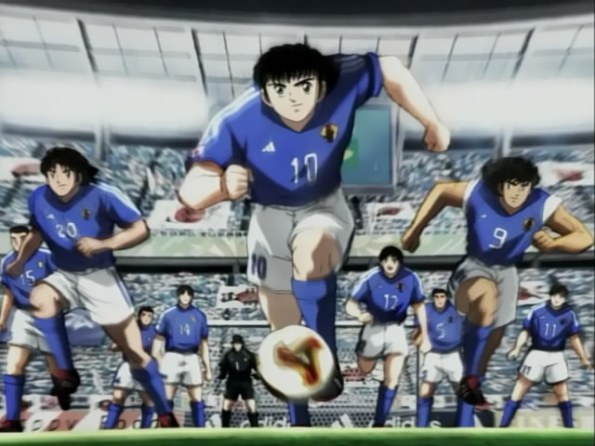
The real reason why Japan has failed to produce a top striker for years? Captain Tsubasa (known as Captain Majed in the Arab World)
What is the side’s main strength and weakness?
Strengths: Japan will always have great teamwork and organization. When our attack is strong it’s *very* strong, and any position player is capable of scoring a goal.
Weakness: Defense, defense, defense. A lot has changed since Okada’s counter-heavy formation in South Africa, but it’s starting to improve now that Konno has been replaced by Morishige and Yoshida is getting playing time for his club. Atsuto Uchida’s absence will hurt.
If you could avoid one side during the tournament who would it be and why?
China, because that match will inevitably end with a Japanese player being stretchered off, never to appear in the rest of the tournament.
Has Aguirre done anything to change the style of football?
He’s swapped out Zaccheroni’s preferred 4-2-3-1 for a 4-3-3, and aimed for a more consistent attacking/defending balance, but it’s a bit too early to say how much things have changed. The roles of the established stars (Kagawa, Honda, Endo, etc) are mostly unchanged.
Any young Japanese players that can emerge as a star in the tournament?
FC Tokyo’s Yoshinori Muto. He’s actually finishing up his degree at Keio University this year so he became known as “Keio Boy” in Tokyo and had a fantastic rookie season with 13 goals. If he can avoid getting caught up in the hype train that derailed Yoichiro Kakitani and other would-be starlets he’s got real potential.
Which non-Japanese player do you think will emerge as a star during the Asian Cup?
That’s tough, and depends on how you define ‘star’. UAE’s Omar Abdulrahman is a good shout from West Asia, and at 22 South Korea’s Son Heung-min is absolutely capable of shining.
How do you think neighbours China and the two Koreas will do?
South Korea are always capable of getting to the semis or higher. North Korea could make it to the quarterfinals but they struggled as recently as November’s East Asian Cup qualifying and they have no tactical Plan B, so they won’t last long if they lose their discipline. China are in decent form and can certainly shock but I don’t think they’ll make it out of their group.
Japan start as favorites but who do you think will be your closest challengers?
Australia are looking up and of course they’ll have fantastic home crowds backing them wherever they go.
That said, it’s really hard to pick a favorite. None of the ‘top’ teams are in particularly great form for one reason or another. This may be the most open Asian Cup in the last few editions. But if the usual suspects find a rhythm and start winning I think it will be very hard for any up-and-comers to upset the established order of things.
Talking to the Expert Panel : An Asian Cup Preview (Part 1)
The Asian Cup will kick off on January 9th as the hosts, Australia, look to start on the right foot against West Asian hopefuls Kuwait. 32 matches and almost 3 weeks later a new champion will be crowned. Champions Japan will look to retain the trophy and add to their record 4 titles. Korea will look to bounce back after a disappointing World Cup. Uzbekistan will try to begin to realize their potential at this level. West Asian hopefuls Iran, under the guidance of Carlos Quieroz, will look to break a four-decade drought. Established Asian players, including Keisuke Honda, Shinji Kagawa, Javad Nekounam, Zheng Zhi and Tim Cahill will be known to most followers. Youngsters like Iraq’s Ali Adnan, UAE’s Ali Mabkhout, Iran’s Alireza Jahanbakhsh and Australia’s Tommy Oar will be looking to etch their names in Asian football history.
With that said, we’ve had the opportunity to speak to a few Asian football experts, whose countries will be taking part at the tournament, for their views and predictions on what lies ahead.
Football Palestine, which can be found on Follow @FutbolPalestine, was founded in 2008 with the intent of providing accurate and detailed information about the Palestine national football team to an international audience. Their network, includes a blog, YouTube, and Twitter, is operated by Abdel-Rahman Hamed & Bassil Mikdadi and has been featured in prominent outlets such as Sports Illustrated, Slate, Metro, and BBC. We had the opportunity to have a brief chat with them about the Palestinian national team and Asian Cup in general.
Ahmad El Hassan, your national team manager, recently had to come out to defend himself after backlash from the fans over some of his selections. What happened?
He made some controversial decisions with his squad selection and was probably guilty of not communicating his reasons for making these decisions. El Hassan’s got a very rigid approach – he’s the boss and he wants the players to know that. For example, Hilal Musa helped Palestine qualify and he missed out on the squad because he didn’t show up to training in October (he had a broken hand). The fans are even more upset over the fact that three foreign-based center backs have been left out (Omar Jarun, Javier Cohene, and Daniel Kabir Mustafá) for unknown reasons. Cohene has since come out and said that injury will not allow him to participate although the PFA claimed that he didn’t respond to their calls and emails. Fans were really excited to have forward Matias Jadue on board and he would have been in the squad but some administrative error resulted in his nationality switch being filed incorrectly.
Considering the backlash, it seems that people back home are taking your participation seriously. What are the expectations for the side?
On paper, this is a very difficult group and the fans are aware of that. That said, Jordan are not the same team they were 18 months ago under Adnan Hamed and Iraq are not displaying the form that crowned them champions in 2007. Both sides haven’t won a game since March and their new coaching appointments are still trying to communicate their ideas to the players. It seems to the fans that if we could escape the game against Japan with a narrow loss then there would be enough points on the table in the next two games. The squad announcement has tempered expectations but with Ashraf Nu’man- maybe the dream scenario can play out.
Was it surprising that you qualified in the first place?
Yes and No. Preparation for the Challenge Cup was less than ideal. Palestine didn’t play any warm-up games, and the Challenge Cup was scheduled on non-FIFA matchdays. A whole host of strikers were ruled out due to injury. That said, Palestine were always favored to make it out of their qualifying group and the way they played in the Challenge Cup it was quite evident that they were the best of the bunch. Palestine has been in the ascendency since late 2011 and Asian Cup qualification via the Challenge Cup path seemed like an attainable goal.
For those who are not familiar with the side tell us what its main strength and weakness is?
We don’t have a lot of options in attack. Mahmoud Eid is the only out-and-out striker in the squad and over the past couple of years the lack of a goal-scorer means Palestine can sometimes struggle to translate good build-up play into results. Mahmoud Eid’s arrival might go some way towards solving this problem. The strength, despite the big name absences, is the defense and by the looks of it Ahmed El Hassan will have the side set up to frustrate the opposition (and the neutral fan).
Does this side have a future or is it just a flash in the pan?
Interesting question. Qualification represents an opportunity for Palestine, even if results don’t go their way in Australia the big game atmosphere will only make them better. Their FIFA ranking will most likely land them in Pot 2 for 2018 World Cup qualifying. This time around they’ll be able to leverage home-field advantage (they have yet to lose at home). I get the feeling that the opportunity is there but a lot depends on administration. The PFA needs to put the right people in charge in order to harness the potential of the players.
Which Palestinian player do you think we should watch out for in Australia?
Abed Jaber. He’s only 21 and at this time last year he wasn’t even on the national team radar but he has single-handedly solved Palestine’s problems at left back.
Which player from the other 15 sides do you think can emerge as a star at this tournament?
Sardar Azmoun of Iran.
How do you think the West Asian sides will do?
Well there are 10 of them so the deck is stacked in our favor. I think this tournament will be won by Australia or Japan and I don’t think that the West Asians in Group A or Group B will advance. My main reason for pessimism is due to the fact that too many national teams are coming into this tournament with new coaches.
Finally, who will win the 2015 Asian Cup?
On paper, Japan should run away with this competition. They are the most talented team in Asia by a country mile. That said, I think Australia – backed by their vociferous home support – could nick it.
Behzod Nazarov is an expert on Uzbeki football and is a leading journalist and writer in his homeland. He combines that role with his role as media officer of notable club Pakhtakor of Tashkent. He can be found on twitter on Follow @BehzodNazarov
Uzbekistan joined the AFC in 1992, and almost immediately won the Asian Games football tournament 2 years later. Many expected more success to follow but it hasn’t. Why?
Uzbekistan has a lot experienced players who played in the old USSR championship. When they became older we faced problems and couldn`t reach positive results. We faced problems with football schools from a grass-roots level as our best footballers had been educated outside our territories. We have also ben unlucky in crucial moments due to refereeing mistakes against us.
Maxim Shatskikh and Alexander Geynrikh were the stars of the past. Does this team have players on their level?
I think Odil Ahmedov, Server Jeparov, Vitaliy Denisov and Aziz Haydarov can play at a very high level. Denisov is one of the main players at Lokomotiv Moscow. Aziz is captain of Al Shabab. They could show good performances in Australia.
How good is Odil Ahmedov?
I think he is main player of team. He has been playing very well in the Russian Premier League and Europa League during the last few years. If he plays well, the national team can achieve good results.
What is the side’s main strength and weakness?
Main strength is teamwork and midfield of the side. But we have had problems in defense in the last few matches. We are not very strong when it comes to one to one battles on the pitch. We are not so good physically if we compare ourselves with Australia, Japan or Korea Republic.
How far can Uzbekistan go in the tournament?
We can go to the quarterfinals. But at that stage we may face Korea Republic or Australia. All depends on that match.
Is there any team you’d like to avoid?
Australia, Korea Republic and Japan, they are the strongest teams of Asia.
Which Uzbek player do you think will emerge as a star during the Asian Cup?
We have two young stars – Sardor Rashidov and Jamshid Iskanderov. They can show their potential in Australia. Denisov, Ahmedov and Jeparov showed their levels in previous matches.
Which non-Uzbek player do you think will emerge as a star during the Asian Cup?
So many potential stars. Japan, Korea and Australia have a lot of star players, Iran, Saudi Arabia, UAE and Qatar can play good football. Omar Abdulrahman of UAE and Bualim Khoukhi of Qatar might be the new stars of Asian football.
Who will win the tournament?
I think it will be Australia or Japan.
Martin-Reza Babry is Editor-in-Chief at Persian Football, a leading source on Iranian football. He is a passionate supporter of Team Melli. He can be found on twitter on Follow @MartinReza59.
What are the expectations back home for Team Melli considering the side hasn’t been champions for almost 40 years?
I believe a group stage exit is unfortunately more likely than the title for us this time. However, considering the draw, a semifinal exit would be quite realistic.
Some critics argue that the side is too old and Carlos Queiroz is focusing too much on short-term results. Do you agree with them?
Looking at the chaotic planning by the Iranian football federation, nothing but short-term plans can be implemented by Queiroz. Considering that we will only have played two real friendly matches since the World Cup when we’ll kick off our Asian Cup campaign versus Bahrain, Queiroz can only rely on the core of the team that represented Iran well in Brazil. That he exchanged 10 of the players in his squad since then is even quite experimental already, although it has to be noted the starting 11 will barely be affected by those changes.
Iran’s style of play is no easy on the eye over the last couple of years, but it seems to get results Do you agree with the approach?
The style of play dramatically changed in summer 2013 when Queiroz successfully implemented a very defensive approach. I generally agree with any approach that gets results, the question is if we can approach Bahrain and the UAE the same way we approached South Korea, Nigeria and Argentina.
What is the side’s main strength and weakness?
The main strength is the extreme tactical discipline and excellent defensive organization. Weakness is lack of creativity upfront which in my opinion stems more from the defensive approach and therefore lack of bodies and options upfront due to the lack of risks taken.
If you could avoid one side during the tournament who would it be and why?
Japan, they have the best squad and if their new coach doesn’t do too much wrong, they should be the strongest team.
The side’s preparations has been marred by incompetence by organizers. If Iran gets knocked out at the first stage, what would the consensus be?
My consensus would be the same as for the last decades, that Iran needs a complete overhaul of the complete footballing system, from grassroots over IPL, political framework (eg. military service) to funding of IFF. However, the consensus of the decision makers in Iranian football would be that a good foreign coach is a waste of money.
Any young Iranian player that can emerge as a star in the tournament?
Alireza Jahanbakhsh. He is skillful, energetic and has learned to overtake responsibility at NEC. Only things that could prevent him are the lack of support upfront or the fact that he, like in world cup, could not be part of the starting lineup.
Which non-Iranian player do you think will emerge as a star during the Asian Cup?
I think this could be Son Heung-Min’s big tournament.
What will Queiroz’s legacy be if he parts company with Team Melli at the end of the Asian Cup?
Probably that all the people saying Iran’s football naturally is an attacking one and you can only be successful with such an approach were wrong. Although that case is probably stronger now than after a post Asian Cup departure of Queiroz, which most likely would take place after an unsuccessful tournament.
Who will win the tournament?
Japan.
Asian Cup 2015 : An Introductory Guide
If you haven’t been following Asian football closely, then the 2015 Asian Cup is probably a good starting point. The continent’s major tournament, alongside the African Cup of Nations, provides good value for money when it comes to entertainment. The 2015 edition takes place in Australia as the Socceroos aim to become the first hosts to lift the trophy since Japan did it last in 1992. They will have their work cut out against the winner of 4 of the tournament’s last 6 editions, Japan, as well as 2-time winners Korea, 3-time winners Iran, fallen giants and 3-time champions Saudi Arabia, and the winners of the 2007 edition, Iraq. Emerging powers such as Uzbekistan, UAE and Qatar may also have championship ambitions.
Preview
The first round is divided into four groups, with seeded sides with Australia, Team Melli of Iran, Japan and Uzbekistan all seeded. On paper, Groups B and C look evenly balanced, making it difficult to pick the sides that could progress. Group A sees the hosts go up against Korea, Kuwait and Oman. Whilst Group D should see Japan finish first and be joined by Jordan or, more likely, Iraq. Palestine makes its tournament debut and will probably be happy to be there, although it’s had the most stringent of preparations for the competition. Group B should see Uzbekistan progress whilst Saudi Arabia, North Korea and China will probably fight for second spot. Group C is an all-West Asian affair with Iran heading UAE, Bahrain and Qatar. Team Melli does not enjoy playing teams from the Middle East and has been upset in recent years against sides such as Lebanon, Bahrain and Jordan and has been perennially held by Qatar too. This group may go into the final day match-ups before the winners or runners-up are known. In terms of progression, Groups A & B as well as C & D are paired in the Quarter Finals.
Korea and Iran remain traditional power-houses in Asian football, but, especially in the case of the Iranians it is largely based upon reputation. Team Melli last won the tournament in 1976 and only came close once in 1996 when the exciting team led by Ali Daei, Khodadad Azizi and Karim Bagheri finished 3rd after losing on penalty kicks against eventual winners Saudi Arabia in the semi-finals. Nevertheless, Iran remains West Asia’s strongest challengers for the title. If you are looking for a dark-horse then Uzbekistan is destined for far more success than it has achieved so far in Asian football. They have an exciting and attacking line-up and have a genuine superstar in Odil Ahmedov, of Russia’s Krasnodar, who provides the heart-beat of the side.
If you were a betting man then its best to put your money on the safe choice of Japan. Australia will be buoyed by the home grown but Ante Posteloglou is currently overseeing the rebuilding of an aging Socceroos side. This tournament may come a little early for the Australians in terms of genuinely challenging the Japanese but over the course of 90 minutes (or 120 for that matter) anything can happen.
What You Should Know
• This is the 16th edition of the Asian Cup
• Only 6 times has the hosts won the tournament
• Ali Daei is the record goal-scorer in the finals tournament with 14 goals during 3 editions
• 15 hat tricks have been scored throughout the tournament with 6 of them scored by Iranians and 3 by Japanese players
• 4 Brazilian managers have led teams to win the tournament in the past
• The 2015 Asian Cup may break China’s attendance record from the 2005 edition (31,877 per game)
• Iran and Korea are appearing for a record 13th time
• Palestine is appearing for the first time
• Iran has won the most matches at the Asian Cup (34) and scored the most goals (112)
• Japan has won the tournament for a record 4 times
• Only Australia, North Korea, Uzbekistan, Bahrain, Iraq, Palestine & the UAE will be managed by local head coaches
Players to Watch (Key Man / Emerging Talent)
Australia – Mile Jedinak (Crystal Palace) / Tommy Oar (Utrecht)
Korea – Ki Sung Yeung (Swansea) / Son Heung Min (Leverkusen)
Oman – Emad Al Hosni (Saham) / Abdul Aziz Muqbali (Fanja)
Kuwait – Badr Al Mutawa (Qadisiya) / Yousef Nasser (Kazma)
Uzbekistan – Odil Ahmedov (Krasnodar)/ Sardor Rashidov (Bunyodkor)
Saudi Arabia – Naser Al Shamrani (Al Hilal) / Naif Hazazi (Al Shabab)
China – Zheng Zi (Guangzhou) / Zhang Linpeng (Guangzhou)
North Korea – Pak Nam Chol (Sisaket) /Pak Kwang Ryong (Vaduz)
Iran – Ashkan Dejagah (Al Arabi) / Alireza Jahanbakhsh (NEC Nijmegen)
UAE – Omar Abdul Rahman (Al Ain) / Ali Mabkhout (Al Jazira)
Bahrain – Fawzi Ayesh (Al Seleya) / Mohammed Al Tayeb (Al Najma)
Qatar – Khalfan Ibrahim (Al Sadd) / Boualim Khoukhi (Al Arabi)
Japan – Keisuke Honda (Milan) / Gaku Shibasaki (Kashima)
Iraq – Younes Mahmoud (No Club) / Ali Adnan (Caykur Rizespor)
Jordan – Amer Shafi (Al Wahdat) / Khalil Bani Attiah (Al Faisaly)
Palestine – Ashraf Nu’man (Al Faisaly) / Abed Jaber (Hilal Al Quds)
The Final Four
Australia, Uzbekistan, Japan & Iran
Importance of Rooney as Goalscorer for England : Comparing with Charlton & Lineker
Earlier this week, England captain Wayne Rooney hit his 45th and 46th international goals for England. Nevertheless, debate ensues between different camps on how good a player Rooney has been during his career. That question cannot be answered with tangible and objective supporting facts. What can be answered, though, is how important a goalscorer Rooney has been for his country. Graeme Souness had stated, in a post-match discussion for Sky Sports, that Rooney cannot be considered an “England great” regardless of whether he beats Sir Bobby Charlton’s England goal-scoring record. Is that a fair assessment? We will try to shed light onto answering that question by comparing Rooney’s scoring exploits for the Three Lions with that of the current two top goal-scorers, Sir Bobby Charlton and Gary Lineker.
Goals to Game Ratios
In the first instance, Rooney has amassed his 46 goals from 101 matches (0.455 goals per game). Charlton finished his England career on 49 from 106 games (0.46 goals per game). Neither had a better goals to games ratio than Lineker who scored 48 times from only 80 matches (0.6 goals per game). Had Lineker been given another 20 or so games at international level, it is likely that he would have finished closer to 60 goals.
Friendly Matches
Today, international friendly matches are games that a lot of players want to avoid. Managers focus on experimenting far more than they did in the past. Matches are arguably less competitive than they had been too. Nevertheless, goals scored during these matches weigh as much as those scored in more meaningful internationals. With that said, Charlton scored 21 goals during friendlies, almost 43% of his total goal tally. These friendlies do not include the British Home Internationals tournaments though. Today, such a tournament may be classified as a “friendly” tournament but it definitely was not back in the day. Lineker, on the other hand, scored 26 times, a whopping 54% of his total goals, during international friendlies. Rooney has scored 14 goals during international friendlies. That figure is 30% of his total goal tally. Rooney’s goals during friendlies also reflects the earlier assertion about the importance of friendlies in modern football.
Major Tournaments
Whilst Charlton is probably the only player between the three who would have ended his career with an international medal, all three have grabbed headlines during the tournaments that they took part in. In terms of European Championships, Charlton scored once in qualifiers and once in the Finals tournament during his career. Lineker scored 7 times during qualifiers but never managed to score a goal during either of the two tournaments he took part in. Rooney, though, enjoys the European Championships. He has scored 10 times, till date, during qualifiers and 5 times during the Finals tournaments he has participated in.
In terms of World Cups, Lineker is England’s record goal scorer with 10 goals and is considered one of the greatest goal-scorers in World Cup histories, hitting 6 and 4 goals in consecutive tournaments. That figure is almost 21% of his total goals tally for his country. He added another 5 during the two qualification campaigns that he took part in. Charlton scored 5 times during World Cup qualifiers and added another 2 during the World Cup in 1966. Rooney has had mixed fortunes during World Cup campaigns. He has been prolific during qualifiers, hitting 16 goals. But he has been extremely goal-shy during the Finals, as illustrated by his solitary goal, during the 2014 World Cup in Brazil.
Scoring Important Goals
Some players score goals whilst others score important goals. For the purposes of this analysis, we have defined important goals as scoring the final equalizing goal of the match or scoring the match-winning goal. For instance, if a team wins 2-0 then the goal-scorer of the first goal would be considered the match winner. But if a team wins 2-1 then the goal-scorer of the 2nd goal would be considered the match-winner.
With the above parameters in play, Charlton scored 16 “important goals” during his England career. In other words, on 16 different occasions, his goals directly contributed to draws or wins for his country. Lineker, though, salvaged draws or victories on 22 different occasions. That means 46% of his goals for England were crucial as opposed to 33% of Charlton’s goals. Between the three, Wayne Rooney has had the fewest crucial goals for England with 13 of his goals (28%) falling within the category.
Final Conclusions
Rooney is undoubtedly set to break Sir Bobby Charlton’s England goal-scoring record, sooner rather than later. It’s also likely that he will become England’s most capped player before he retires. As a goal-scorer, his scoring ratio for his country is as good as Charlton’s. Rooney has not “wasted” his goals during international friendlies either. However, his goals have been the least crucial when it came to deciding the outcome of matches when compared to his two counterparts. Gary Lineker holds the honor for being the most influential goal-scorer between the three. Even if he is not England’s record goal-scorer, Lineker is arguably England’s most important goal-scorer, a tag he has further cemented with his impressive 10 goals during two World Cup Finals. Rooney, though, will remain the most important goal scorer of his generation for his country and its hard not to consider him as one of England’s most impressive internationals of all time. But its unlikely he should be talked about in the same vein as the likes of Charlton, Shilton, Sir Bobby Moore, or Lineker, purely based on the notion that his contributions have not resulted in anything of notable significance for his country – or not yet at least.
